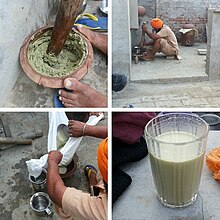As the psychoactive effects of cannabis include increased appreciation of the arts, including and especially music, as well as increased creativity, its influence and usefulness can be found in a variety of works. While coded names of cannabis appeared in music as early as the 1920s, such as Louis Armstrong's song, "Muggles," it wasn't until the 1960s and 70s when more artists began referencing it explicitly. Songs famous for their cannabis-centric lyrics produced during this time include "Got to Get You into My Life" by The Beatles, "Rainy Day Women#12 and 35" by Bob Dylan, and Black Sabbath's "Sweet Leaf."
Today, countless artists, not constrained to any drug-culture-specific genre, have opened up about their substance consumption and how it has inspired their works. Snoop Dogg's love of marijuana is very well known, having created his own line of weed, vaporizer pen, and website focusing on cannabis culture. Willie Nelson, who owns a cannabis company called Willie's Reserve, has even said that smoking saved his life. Willie's Reserve Label, is known for promoting social reform in hopes of ending marijuana and hemp prohibitions; it also partners with local Colorado growers, extractors and edibles makers for his wholesale brand. Where as Jay-Z also represents TPCO, which is now one of the largest cannabis companies in the world as a 'Visionary Officer'. Young artists like Greg Welch produce hundreds of pieces of art using cannabis flowers and other related stuffs. Other contemporary artists who have been vocal about their cannabis use include Miley Cyrus, Jay-Z, Lady Gaga, Zayn Malik, Wiz Khalifa, Rihanna, and Dave Chappelle.
The Marley Family, to keep Bob Marley's legacy alive started Marley Natural Archived June 16, 2022, at the Wayback Machine in 2016. Sound Tribe Sector 9 now being part of Colorado's cannabis culture, now partnered with Green Dot Labs to release exclusive hash pens. Wiz Khalifa's WeedFarm Archived June 22, 2022, at the Wayback Machine app (launched in 2017) help's play users on creating their own cannabis brands.
Cultures

Cannabis — the plant that produces hemp and hashish — has been one of the most used psychoactive drugs in the world since the late 20th century, following only tobacco and alcohol in popularity. According to Vera Rubin, the use of cannabis has been encompassed by two major cultural complexes over time: a continuous, traditional folk stream, and a more circumscribed, contemporary configuration. The former involves both sacred and secular use, and is usually based on small-scale cultivation: the use of the plant for cordage, clothing, medicine, food, and a "general use as an euphoriant and symbol of fellowship." The second stream of expansion of cannabis use encompasses "the use of hemp for commercial manufacturers utilizing large-scale cultivation primarily as a fiber for mercantile purposes"; but it is also linked to the search for psychedelic experiences (which can be traced back to the formation of the Parisian Club des Hashischins).
Cannabis has been used in the ancient past in places such as ancient India, Romania, Egypt, and Mesopotamia. It was often used as medicine or for hemp, its main route of consumption was smoking. In addition, the plant holds cultural significance in many Eurasian countries. Hemp is associated within cultural rituals like marriage, death, birth, healing, protection, and purification. In some Eastern European folklore, hemp links a spirit to the afterlife.
Over time the culture became more international and a general "cannabis culture" formed. The culture has been responsible for the genre of films known as stoner films, which has come to be accepted as a mainstream cinema movement. In the United States the culture has also spawned its own celebrities (such as Tommy Chong and Terence McKenna), and magazines such as (Cannabis Culture and High Times).
India

Cannabis is indigenous to the Indian subcontinent. Cannabis is also known to have been used by the ancient Hindus of the Indian subcontinent thousands of years ago. The herb is called ganja (Sanskrit: गञ्जा, IAST: gañjā) or ganjika in Sanskrit and other modern Indo-Aryan languages. Some scholars suggest that the ancient drug soma, mentioned in the Vedas, was cannabis, although this theory is disputed.

Today cannabis is often formed into bhang, which has become an integral part of tradition and custom in the Indian subcontinent. In some sections of rural India, people attribute various medicinal properties to the cannabis plant. If taken in proper quantity, bhang is believed to cure fever, dysentery, sunstroke, to clear phlegm, aid in digestion, appetite, cure speech imperfections and lisping, and give alertness to the body.
Jamaica

By the 8th century, cannabis had been introduced by Arab traders to Central and Southern Africa, where it is known as "dagga"; many Rastas say it is a part of their African culture that they are reclaiming. It is sometimes also referred to as "the healing of the nation", a phrase adapted from Revelation 22:2.
Alternatively, the migration of many thousands of Hindus and Muslims from British India to the Caribbean in the 20th century may have brought this culture to Jamaica. Many academics point to Indo-Caribbean origins for the ganja sacrament resulting from the importation of Indian migrant workers in a post-abolition Jamaican landscape. "Large scale use of ganja in Jamaica ... dated from the importation of indentured Indians...."(Campbell 110). Dreadlocked mystics Jata, often ascetic known as sadhus or Sufi Qalandars and Derwishes, have smoked cannabis from both chillums and coconut shell hookahs in South Asia since the ancient times. Also, the reference of "chalice" may be a transliteration of "jam-e-qalandar" (a term used by Sufi ascetics meaning 'bowl or cup of qalandar'). In South Asia, in addition to smoking, cannabis is often consumed as a drink known as bhang and most qalandars carry a large wooden pestle for that reason.
United States
Marijuana's history in American culture began during the Colonial Era. During this time, hemp was a critical crop, so colonial governments in Virginia and Massachusetts required land-owning farmers to grow marijuana for hemp-based products. Two of the nation's founding fathers, Thomas Jefferson and George Washington, were notable cultivators of hemp. Another Colonial Era figure, John Adams, was a recreational user and wrote about hemp's mind-altering powers.
Beatnik
Marijuana use was associated with the subculture, and during the 1950s, Aldous Huxley's 1954 book The Doors of Perception further influenced views on drugs. This would later influence the hippie movement.
Hippie
Following in the footsteps of the Beatniks, many hippies used cannabis, considering it pleasurable and benign.
Hipster
The term "Hipsters" define two cultural groups, the 1940s subculture dedicated to jazz, and the contemporary subculture today. Both are stereotyped as enjoying cannabis. In fact the early hipsters of the 1940s had many slang terms dedicated to the drug and its distribution.
Events

Notable cannabis-related events have included the Cannabis Cup, Global Marijuana March, Hanfparade, High Times Medical Cannabis Cup, MardiGrass, Spannabis, and Tokers Bowl.
Annual events in the United States include the Boise Hempfest, Emerald Empire Hempfest, Freedom Rally, Great Midwest Marijuana Harvest Festival, Hash Bash, Missoula Hempfest, Moscow Hemp Fest, National Cannabis Festival, National Cannabis Summit, Olympia Hempfest, Portland Hempstalk Festival, Salem Hempfest, and Seattle Hempfest.
Media
Media coverage of marijuana has progressed in recent history. Attention and coverage of the drug began in the 1930s when fabricated horror stories of its effects were used to scare the public and influence public opinion. To push the negative connotations of marijuana even more, films such as Marihuana (1936) and Reefer Madness (1937) were created.
Cannabis-related media include Cannabis Planet, High Times, Stoner TV and Weedtuber. Websites include Leafly, MassRoots, Merry Jane, Price of Weed, and Wikileaf.
The social game Pot Farm created "the largest cannabis community on earth", with 20 million unique players across its platforms and a 2011 figure of over 1 million users on Facebook.

